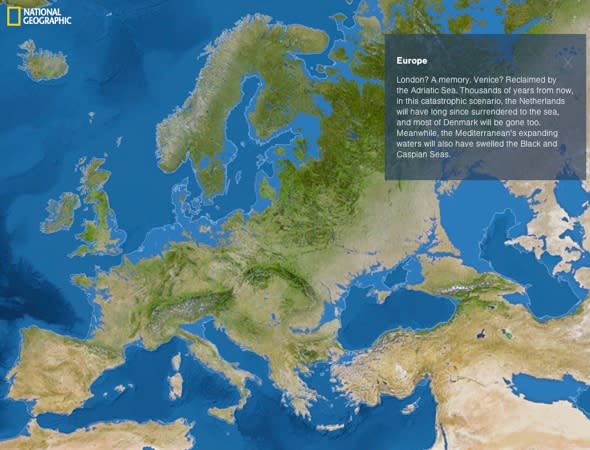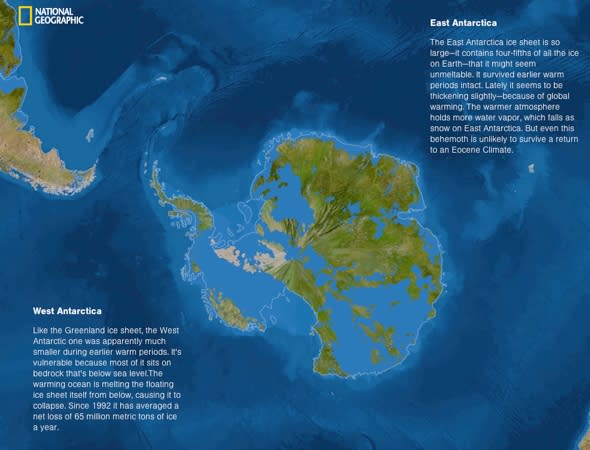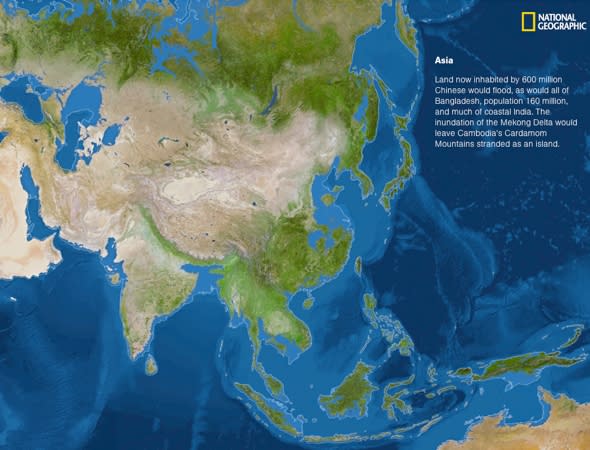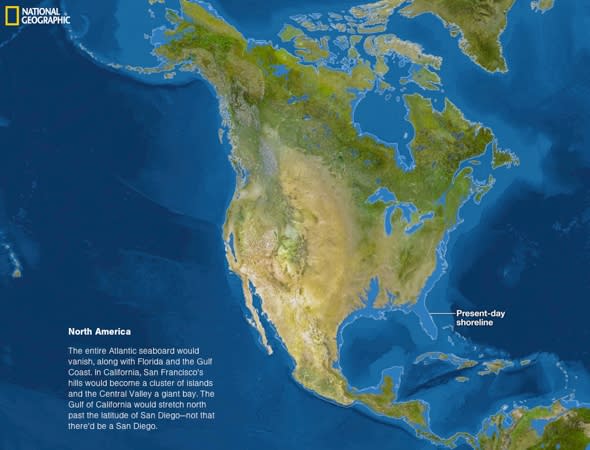Pictures: Which countries would disappear if world's ice melted?

What would happen if all of earth's ice melted?
London and most of south east England would disappear altogether, for a start. And so would Venice, the entire Netherlands and a good chunk of Denmark.
At least, that's according to National Geographic, which has created a set of maps showing the catastrophic effects melting ice could have on the countries around the globe.
While it suggests it would take around 5,000 years for temperatures to rise enough to melt all the five million cubic miles of ice on the planet, it suggests that this process has already started.

Since 1992, the warming ocean has seen the West Antarctica ice sheet lose 65 million metric tons of ice a year.
The East Antarctic ice sheet is so large - containing four-fifths of all the ice on earth - that it might seem unmeltable. But, says National Geographic, it is unlikely to survive a return to an Eocene Climate.
The Eocene was a period of increased global temperatures that lasted from 56 to 34 million years ago. During this time, there was little or no ice on Earth, and there was little difference in temperature at the equator and the poles, reports the Daily Mail.
The planet cooled as carbon dioxide from the air locked sea floor sediments, and ice began to reappear at the poles.

National Geographic explains: "The maps here show the world as it is now, with only one difference: all the ice on land has melted and drained into the sea, raising it 216 feet and creating new shorelines for our continents and inland seas.
"If we continue adding carbon to the atmosphere, we'll very likely create an ice-free planet, with an average temperature of perhaps 80 degrees Fahrenheit instead of the current 58."
The rise in greenhouse gases creating this global warming could mean large parts of the planet will become too hot for humans. National Geographic suggests we could create this by burning all the Earth's supply of coal, oil, and gas, adding five trillion more tonnes of carbon to the atmosphere.

The entire Atlantic seaboard would vanish, along with Florida and the Gulf Coast.
In Asia, land now inhabited by 600 million Chinese people would flood, as would all of Bangladesh and much of coastal India.
National Geographic says: "Predominantly desert, Australia would gain a new inland sea - but it would lose much of the narrow coastal strip where four out of five Australians now live."
It adds: "Compared with other continents, Africa would lose less of its land to the ultimate sea-level catastrophe, but Earth's rising heat might make much of it uninhabitable."
Related articles
Video: North Pole ice melts into small lake
Arctic temperatures highest in 44,000 years





